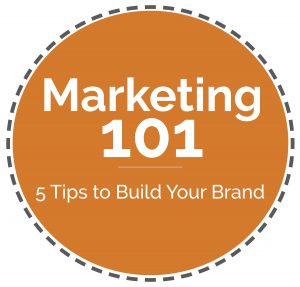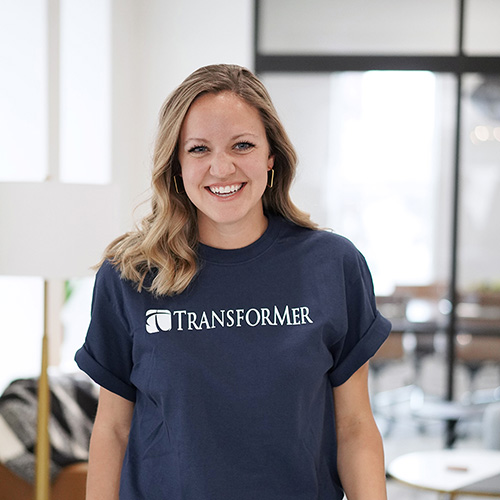
Introducing our Marketing 101 blog series, which aims to equip your organization with essential tools to establish a strong brand identity in the community. It doesn’t matter how great your programs are or the incredible services you offer if no one knows about your great work. Your efforts will fall short every time.
We know many of you do essential work in your communities. You are working to reduce homelessness, reduce hunger, improve health outcomes, improve student attainment, get more students to and through college, help find permanent homes for children in foster care, and so on.
At TCG, we are here to help you accelerate your impact, and often, that starts by laying a foundation with simple marketing strategies. This series will offer practical tips for marketing your organization using little time and resources. By taking these steps, you could see an increase in enrollment, the development of new partnerships, an increase in funding from individual donors and philanthropic funders, and an improvement in your public image.
First, we’ll start with building your brand. This will be the foundation for all other marketing strategies moving forward. What is an organization’s brand? A brand is your logo, website, tagline, color scheme, etc. It reflects your employees, your culture, and your services. A brand is all these things and more. A brand is what makes you you.
The American Marketing Association defines “brand” this way, “A brand is a name, term, design, symbol, or any other feature that identifies one seller’s good or service as distinct from those of other sellers.”
Remember why your organization formed and developed your programs and services. Your community had a compelling need, and your organization formed to meet that need. You saw a gap in the services and an opportunity to make a difference. Your brand should communicate this.
Here are 5 tips for creating or strengthening your brand:
1. Define your brand
When first starting to define your brand, ask yourself these questions:
- What is my organization’s mission?
- What are the benefits of our services?
- What makes my organization unique?
- What does the public think of my organization?
- What qualities do I want people to associate with my organization?
This requires some soul-searching and research. Learn the needs of your community and the habits of your current and potential clients. Please talk with your team to determine their feelings and thoughts about your organization. Once you can answer the questions above, you’ll better understand your next steps and can move on down this list.
2. Get a logo and put it everywhere
Your logo must incorporate tip #1 and communicate who you are as an organization. This can be simple but should also convey critical messages about your brand. Once you have a crisp image reflecting your organization and mission, PUT IT EVERYWHERE. This logo should be included in all your communication efforts. It should be featured throughout your website, social media platforms, collateral materials, staff email signatures, building signage, etc.
We’re visual people, and while the public may not be able to recite your entire mission statement, they should be able to connect your logo with your brand.
Our team recently led a training with the United Way of Central Indiana about being results-driven. Day two of our training focused on using our collected data to tell our story and improve our results. The participants brought in various collateral materials to share and review how they use data to tell their stories in their brochures, program flyers, annual reports, postcards, and other places. One organization had about 6-10 different pieces about their organization, and each one looked different. There needed to be a unifying look across the marketing material.
3. Develop a tagline
This should be short and sweet but memorable. You want your tagline to be true to who you are (again, go back to tip #1), but you also want it to catch attention. Your tagline should help people remember you. We don’t always have much time to capture the public’s attention, so we want taglines full of punch and dynamic to draw in potential clients, donors, and partners before they mentally check out. Your tagline is what makes people come to you!
Once you have your tagline, use it! Please put it on your company’s business cards, website, marketing materials, email signature, office walls, and other visual locations.
Our company’s tagline is “Accelerating your impact”. It is three words and is easy for our team, clients, and partners to remember. It also emphasizes our mission and purpose.
4. Craft an elevator pitch
An elevator pitch or speech is a short overview of your business or services and can be helpful when doing face-to-face networking. It’s a powerful tool that your entire team should have in their tool belt. This is meant to be short, hence the name. It’s something that could be spouted out during your average elevator ride. It should include who you are, the change you are wanting to improve, who you serve, and what makes you unique. It should also include an action item. If you’re talking to a potential client then let them know their next steps in utilizing your services, or if you’re pitching a prospective donor make it clear how they can get involved.
An elevator pitch is something you need to create and share with your entire team, so they are all saying the same message when they are representing your organization on and off the clock. Staff often attend community meetings or networking events. You want your staff, board members and volunteers to have a unifying message about your organization. Find more ideas here.
5. Be consistent

Consistency, consistency, consistency. In this entire marketing series, we will come back to this word, and it starts with your brand. If you want the public to clearly understand who you are, they need to be soaking in the same message every time. Everything from consistent colors, fonts, language, etc., must align across all your brand’s are as. The more people hear and see the same consistent message, the more likely they will start connecting the dots and remembering who you are as an organization.
Many organizations do this well. One example of an organization with a robust and consistent brand is our partner, Early Learning Indiana (ELI). If you visit their website, you can quickly see the organization’s mission and logo, rather than having to scroll down the page or search through pages of information. If you have ever received a newsletter from ELI, you’ll notice the same things – consistent colors, tagline, language, etc. Jump over to the organization’s social media pages, and you’ll recognize the consistency across all platforms.
At TCG, we want to help you move your mission forward—whether that’s behind the scenes performing research on new services, evaluating the impact of your services, or marketing what you already have in place. Contact us today and learn more!

